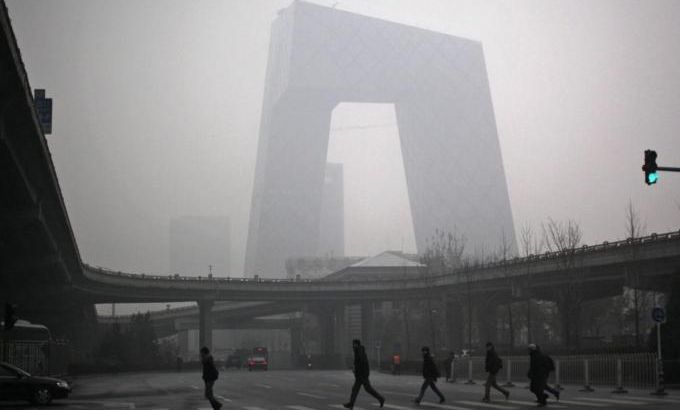
The human cost of China’s rapid development
As a dense smog lingers over Beijing and pollution reaches dangerously high levels, we look at the roots of the crisis.
As the world’s second largest economy steams ahead, it is leaving a dense smog in its wake.
Pollution in China has reached dangerously high levels in recent days. Dozens of cities are affected by thick smog and haze, 40 times the limit deemed safe by the World Health Organisation (WHO).
More than 100 million citizens have been affected; from Beijing to Guiyang, factories have been asked to close and people are being urged to stay indoors.
Keep reading
list of 4 itemsTurtles swimming to extinction in Malaysia as male hatchlings feel heat
Could shipping containers be the answer to Ghana’s housing crisis?
Thousands protest against over-tourism in Spain’s Canary Islands
|
“The government is trying its best to do something … however, this is not sufficient, mainly because the problem of pollution in Beijing has been accumulated over three decades because of the rapid industrialisation and urbanisation in Beijing as well as in other parts of China. And the solution cannot be done overnight.“ – Victor Gao, China National Association of International Studies |
Public anger has boiled over. Even government supporters, including state-controlled media, are urging the authorities to take action.
The People’s Daily, the official newspaper of the Communist Party, asks: “How can we get out of this suffocating siege of pollution? Let us clearly view managing environmental pollution with a sense of urgency.”
The Global Times says the government should stop its “previous method of covering up the problems and instead publish the facts”.
And the China Daily puts the blame on Beijing’s skyscrapers, saying: “The high-rises are too densely built and block the dirty air from dispersing”.
Pollution has been identified as one of the biggest challenges facing China’s leaders, with Hu Jintao, the outgoing president, saying the country needed to “reverse the trend of ecological deterioration and build a beautiful China”.
According to the WHO, there have been 500,000 pollution related deaths since 2008; respiratory-related cancer is the leading cause.
Coal is the main polluter, contributing to 80 percent of China’s carbon dioxide emissions.
|
“China is stuck in the hangover of an overly fast growth period. Growth is slowing down, but the rest of the world wants China to grow so it can grow … The problem is, at the scale at which China is and the amount of inefficient consumption of energy in the buildings of China, more growth means much, much more pollution.“ – Marshall Mays, a financial analyst |
Only one percent of people in cities breathe air considered safe by European Union standards.
The large number of industrial areas is causing acid rain – which affects 30 percent of the country.
And, according to a study released last year, pollution cost China’s economy $112bn in 2005, because of lost labour and medical care.
So, is China’s rapid development damaging the quality of life for its people?
To discuss this, Inside Story with presenter Shiulie Ghosh is joined by guests: Yan Peng, the China director of Clean Air Asia, a non-profit organisation promoting better air quality and livable cities across Asia; Marshall Mays, a financial analyst and director of Emerging Alpha Advisors, a risk adviser to financial investors in Asia; and Victor Gao, the director of the China National Association of International Studies and a former foreign service officer for the Chinese government.
POLLUTION IN CHINA
- Smog is covering Beijing for a third day at dangerous levels
- Haze is expected to remain over Beijing until Wednesday
- Visibility is around 100 metres in some areas
- Official readings of pollution in Beijing on Saturday were over 700 mcg per cubic metre of particles
- Levels dropped to 350 on Monday but still above safe levels of 25 mcg
- Children and elderly advised to stay indoors when levels at 300 mcg
- Chinese are taking to social media sites to vent anger at authorities
- 16 of the world’s 20 most polluted cities are in China
- 760,000 people die in China every year because of pollution
- Cancer is nation’s biggest killer and rate has surged since the 1990s
- Cancer caused one in five deaths in 2007 up 80 percent on the previous 30 years